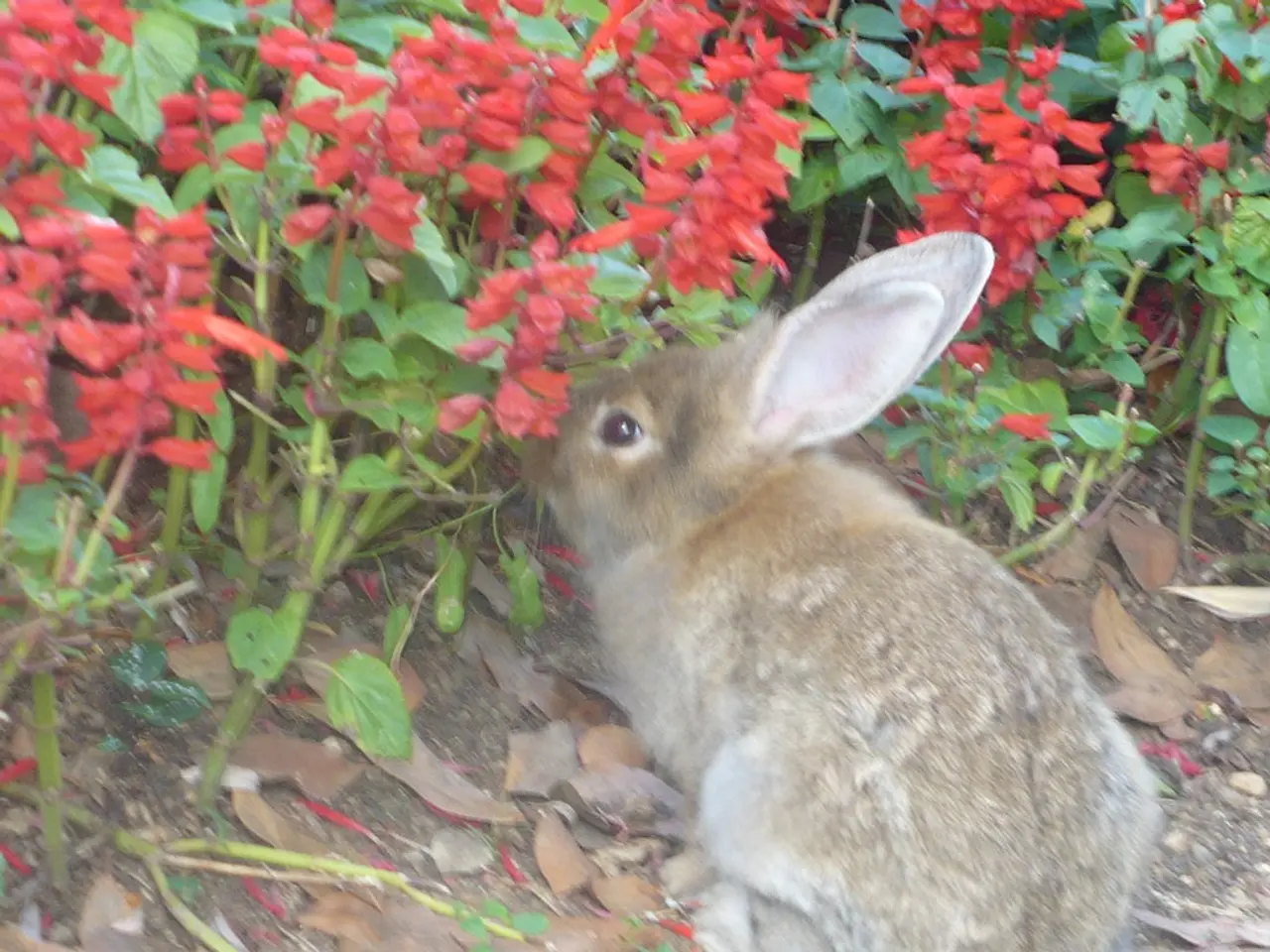Rabbit and Hare Distinctions: Ear Differences, Speed Variations, and Social Behavioral Patterns
Hares and Rabbits: A Tale of Two Species
In the vast expanse of the animal kingdom, two creatures share a common family: the Leporidae. However, these are far from being carbon copies of each other. Hares and rabbits, despite their similarities, lead vastly different lives, as a closer look reveals.
Biology
The most obvious difference between these two is their physical appearance. Hares, with their longer legs and larger ears, often adorned with black markings, are generally larger than their rabbit counterparts. In contrast, rabbits are smaller and have shorter ears [1][2].
Their developmental journey also varies significantly. Hares are born fully developed, with fur and open eyes, after a gestation period of about 42 days. Rabbits, on the other hand, are born hairless, blind, and helpless after a shorter gestation of roughly 30–31 days [1].
Behavior
When it comes to socialising, rabbits are the more gregarious of the two. They often live in groups or colonies, communicating through body language and thumps. Hares, however, are more solitary and aloof, rarely forming groups and only pairing briefly to breed [3].
Lifestyle and Habitat
Hares and rabbits also prefer different habitats. Hares prefer more open areas and are adapted for speed and endurance to evade predators, relying on their larger size and longer limbs. Rabbits, on the other hand, occupy a variety of environments from deserts to tropical forests and wetlands, primarily in mid-latitude regions of both hemispheres. The European rabbit (Oryctolagus cuniculus) is widespread and the ancestor of domestic rabbits [1].
Diet and Reproduction
Both rabbits and hares have a vegetarian diet, consisting mainly of grass, hay, and leafy greens. Domesticated rabbits also enjoy vegetables like carrots or parsley, but still need hay to stay healthy. Hares, such as the jackrabbit, can reach speeds over 45 mph (70 km/h), while rabbits prefer a quick zigzag hop to escape danger and tend to stay hidden in woods or grassy areas.
Female rabbits can have several litters a year, while hares tend to breed less frequently but give birth to more developed young. Rabbits live underground in social groups, often in networks called warrens, while hares live solitary lives and nest in shallow ground depressions instead of burrows.
Myth and Reality
The Easter Bunny, often shown delivering eggs, may have drawn from hare behavior due to their spring breeding and high energy. However, the actual bunny in your backyard or hutch is likely a domesticated rabbit, not a wild hare. Only domestic rabbits are suitable as pets, as they can be comfortably held in one's lap.
In summary, hares and rabbits are distinct within the same family: hares are larger, born more developed, live solitary in open habitats, and lack burrows, whereas rabbits are smaller, born helpless, social, and live in burrows within more sheltered environments [1][3].
[1] - National Geographic. (n.d.). Hare vs. Rabbit: What's the Difference? Retrieved from https://www.nationalgeographic.com/animals/mammals/hare/
[2] - The Spruce Pets. (n.d.). Rabbit vs. Hare: What's the Difference? Retrieved from https://www.thesprucepets.com/rabbit-vs-hare-1628616
[3] - Animal Diversity Web. (n.d.). Leporidae. Retrieved from https://animaldiversity.org/accounts/Leporidae/
[4] - The Hare. (n.d.). Habitat. Retrieved from https://www.thehare.org/habitat/
[5] - The Rabbit. (n.d.). Habitat. Retrieved from https://www.therabbit.org/habitat/
- In the realm of technology and home-and-garden, the understanding of hares and rabbits' biology might lead to pioneering advancements in pet care and wildlife conservation, such as developing specialized diets for domesticated rabbits or constructing more suited habitats for both species.
- The energy consumed by hares, with their larger bodies and swift movements, is significantly higher compared to rabbits in sustaining their lifestyle, due to their need for speed and endurance to evade predators, highlights the fascinating interplay of energy usage in these species in the vast space of the animal kingdom.
- A pet owner might opt for a rabbit over a hare due to their societal nature, gregarious behavior, and preference for living in more varied environments, which can create a harmonious lifestyle integration within a home-and-garden setting, fostering a closer bond between pet and owner.




